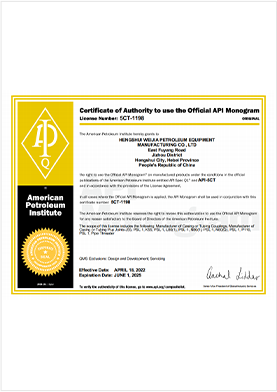- Afrikaans
- Albanian
- Amharic
- Arabic
- Armenian
- Azerbaijani
- Basque
- Belarusian
- Bengali
- Bosnian
- Bulgarian
- Catalan
- Cebuano
- Corsican
- Croatian
- Czech
- Danish
- Dutch
- English
- Esperanto
- Estonian
- Finnish
- French
- Frisian
- Galician
- Georgian
- German
- Greek
- Gujarati
- Haitian Creole
- hausa
- hawaiian
- Hebrew
- Hindi
- Miao
- Hungarian
- Icelandic
- igbo
- Indonesian
- irish
- Italian
- Japanese
- Javanese
- Kannada
- kazakh
- Khmer
- Rwandese
- Korean
- Kurdish
- Kyrgyz
- Lao
- Latin
- Latvian
- Lithuanian
- Luxembourgish
- Macedonian
- Malgashi
- Malay
- Malayalam
- Maltese
- Maori
- Marathi
- Mongolian
- Myanmar
- Nepali
- Norwegian
- Norwegian
- Occitan
- Pashto
- Persian
- Polish
- Portuguese
- Punjabi
- Romanian
- Russian
- Samoan
- Scottish Gaelic
- Serbian
- Sesotho
- Shona
- Sindhi
- Sinhala
- Slovak
- Slovenian
- Somali
- Spanish
- Sundanese
- Swahili
- Swedish
- Tagalog
- Tajik
- Tamil
- Tatar
- Telugu
- Thai
- Turkish
- Turkmen
- Ukrainian
- Urdu
- Uighur
- Uzbek
- Vietnamese
- Welsh
- Bantu
- Yiddish
- Yoruba
- Zulu
well casing coupling
Understanding Well Casing Coupling A Key Component of Oil and Gas Drilling
In the oil and gas industry, the integrity of drilling operations is paramount for safety and efficiency. One of the crucial components of this process is the well casing coupling. These couplings play an essential role in ensuring that the casing strings are securely connected, providing structural stability to the wellbore and allowing for the safe extraction of hydrocarbons from the earth.
Well casing refers to the series of pipes that are inserted into a drilled borehole to provide structural integrity and isolate different strata of rock and fluids. The casing system protects the wellbore from collapse, prevents fluids from leaking into undesired formations, and safeguards groundwater from contamination. Couplings, typically short lengths of pipe with threaded ends, are used to connect these casing strings. The quality and reliability of well casing couplings are vital for maintaining the overall integrity of the well.
There are several types of couplings used in oil and gas drilling, each designed for specific applications. The most common type is the threaded coupling, which allows two sections of casing to be connected securely. These couplings can be classified into various standards, with API (American Petroleum Institute) specifications being widely recognized in the industry. API couplings, designated as either “regular” or “heavy,” vary in thickness and strength, with heavy couplings being used in more demanding environments.
well casing coupling

The selection of the appropriate coupling is critical and depends on various factors, including the depth of the well, the pressure conditions, the type of fluids to be contained, and the geological characteristics of the drilling site. For instance, in high-pressure and high-temperature wells, stronger couplings may be required to withstand the increased stresses. Moreover, the compatibility of materials is essential to prevent corrosion and enhance longevity, particularly in aggressive environments.
The installation of well casing couplings is a meticulous process that requires precision. Each coupling must be threaded correctly to ensure a tight fit, as any gaps can lead to leaks and potential failures. Furthermore, the use of sealants or thread compounds can enhance the connection, providing additional barrier protection against fluid migration.
In recent years, advancements in technology have led to innovations in coupling design and production. Manufacturers are now employing advanced materials and coatings that improve corrosion resistance and reduce wear and tear during operations. Furthermore, digital technologies are being utilized for monitoring the integrity of couplings in real-time, allowing operators to detect potential issues before they escalate into serious problems.
In conclusion, well casing couplings are fundamental to the safe and efficient drilling of oil and gas wells. Their robust design and reliable performance are essential for maintaining the structural integrity of wells and ensuring that hydrocarbons can be extracted safely. As the industry continues to evolve, ongoing innovations in coupling technology will play a critical role in enhancing drilling safety and efficiency for years to come. Understanding the intricacies of well casing couplings is vital for anyone involved in the exploration and production of oil and gas, emphasizing the necessity of these components in the broader context of the industry's operations.
-
Tubing Pup Joints: Essential Components for Oil and Gas OperationsNewsJul.10,2025
-
Pup Joints: Essential Components for Reliable Drilling OperationsNewsJul.10,2025
-
Pipe Couplings: Connecting Your World EfficientlyNewsJul.10,2025
-
Mastering Oilfield Operations with Quality Tubing and CasingNewsJul.10,2025
-
High-Quality Casing Couplings for Every NeedNewsJul.10,2025
-
Boost Your Drilling Efficiency with Premium Crossover Tools & Seating NipplesNewsJul.10,2025







